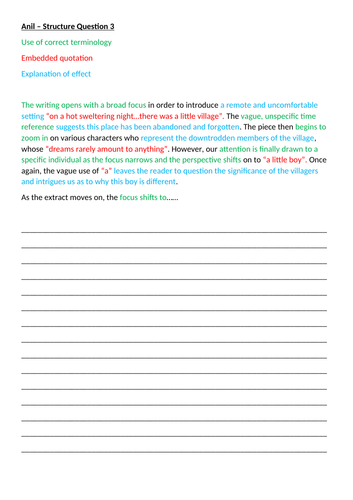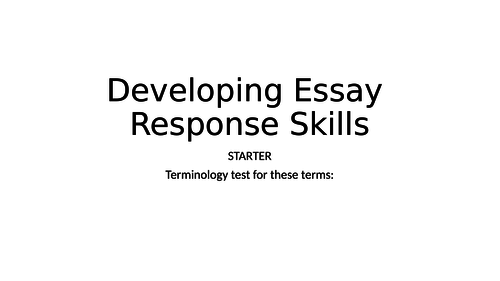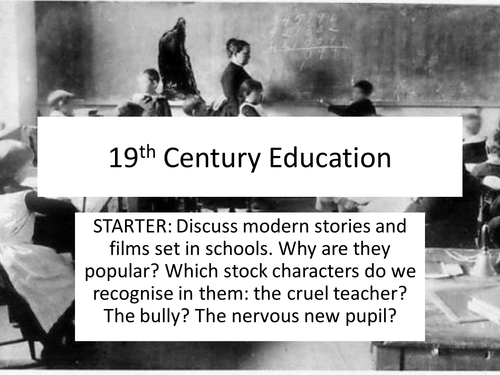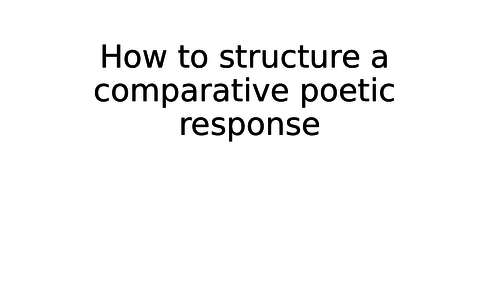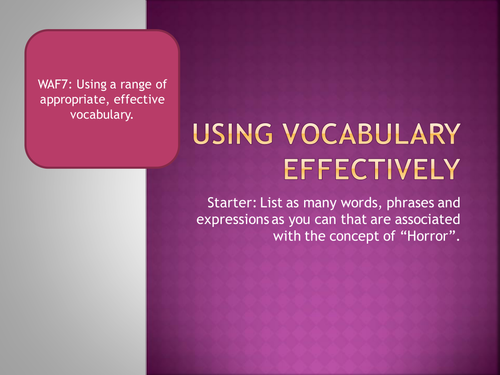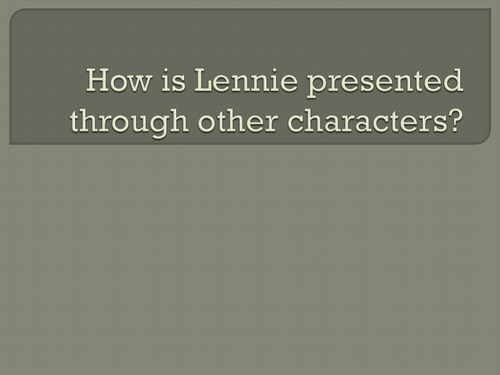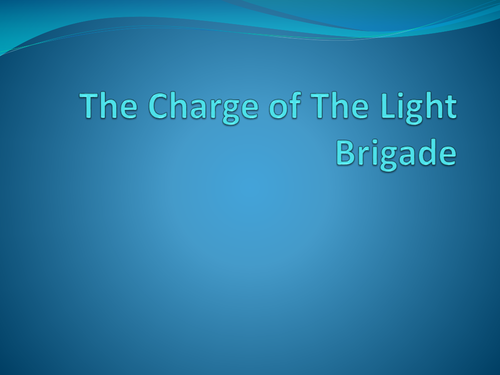
228Uploads
560k+Views
1393k+Downloads
All resources

AQA: Year 9 Intro to English Language Paper 1 + Workbook
A variation on a selection of lessons that I sell elsewhere. Here, the center piece is a 26 page printable workbook that runs in tandem with the power-point lessons - ideal for a Summer Term 2 unit of work where you are reluctant to give the students a new work book, and working on paper is problematic.
The text is Anil (from the old Sunlight on the Grass Anthology) and there is about 12 lessons worth of material here.

AQA English Language Paper 1: Brighton Rock
A deconstruction of the English Language Paper 1 examination that uses Brighton Rock as a source. I’ve lifted the model material from the mark schemes and there’s FAR related targets included. Essentially, this is a lesson that can be taught either AFTER the students have sat the exam and you want them to peer/self assess, or you could change it so that that they answer a question and then mark their efforts.
The Section B element is a bit of an experiment - peer marking creative writing is always a challenge. So I’ve given the students a series of yes/not/some related questions. The idea is that they “tick” the level next to the answer on a copy of the AO5 and AO6 mark schemes. Using that, they should be better able to work out where the creative writing fits. My peer marked creative writing has got much more accurate as a result of this.

AQA English Language and Literature: Developing essay response skills to the Paris Anthology section
This is my attempt to engage and develop my Year 12s academic voices in their Paris Anthology related essay responses. The main issue my class had seemed to focus upon when and where to start. What I do is show them how they can place a particular emphasis on one of several potential areas of focus initially. I show them how they could use Mode, Audience, Purpose, each of Grice’s Maxims and each of the different levels of language as a starting point for an analytical response. The attached word document appears to be an “essay”.It isn’t. It’s the collected starting points placed in one document so that the students can focus more on the “how you do it” instead of trying to copy down the best bits.
It worked reasonably well and is suited for a class with similar needs. Hope you find this useful.

Punctuation vs Teachers: Tracking punctuation skill progress and making it fun(ish...)
A series of activities that are designed to be taught over time. There is a bit of initial leg-work to do in setting up the spreadsheet and, truth be told, I’ve had more success using this with smaller classes than with larger ones - the volume of specific data generated gets unwieldy with the larger groups.
So, I’ve divided punctuation up into three groups - BASIC, MID-RANGE and ADVANCED. The idea is that you teach/go over/re-demonstrate the type a type of punctuation. Then, the students are given ten minutes to write where they focus on using that type of punctuation. Each punctuation type has a points value, and the goal is to “defeat” a possessed teacher by using that type of punctuation. The powerpoint presentations each show a teacher (or a combination of teachers) making their way across the screen over the course of ten minutes. There’s the option of spooky orchestral music too.
There are specific work sheets that each student will need - each work sheet contains the points value of each punctuation type and a grid where you can wither self/peer/teacher assess depending on how you want to set the lesson up.
As the class progresses, so to does the complexity of the task. Each new level incorporates a new type of punctuation OR (more importantly) a new combination of focuses. For example, level 3 requires students to use BASIC and MID-RANGE punctuation to defeat two teachers.
What I found useful was the specific nature of the feedback I got: I could see quite clearly which punctuation types were defeating each student and which punctuation type was an issue for the class as a whole. And, if the class lost (which they did on more than one occasion) then they retried the level the following week.
We used this in SPAG lessons in combination with some other elements - it can easily be made into a whole lesson.
A useful little tool…

Sunlight on the Grass Revision Booklet
I designed this for the old AQA specification. Now that the spec is obsolete, some of you might be thinking of turning those stacks and stacks of anthologies into resources for KS3 classes (we certainly are for year 9). As a result, you may find this booklet useful.
The booklet is essentially a copy of the entire anthology where on the left hand side of a double page spread you have the text, and on the right hand side you have space for notes. Each story is ended with generic questions and has TWO exam questions for revision purposes.
Perfect for planning lessons when you are taking an extended period of time off.
Happy reading.

KS3: Creative Writing (linked to A Midsummer Night's Dream)
After teaching content related to AMND, we had changed direction and ended up doing some creative writing. These lessons build on some top end creative skills.

AQA English Literature Shakespeare: Romeo and Juliet
A series of lessons that can easily be expanded out to around 12-13 lessons that do the following:
Establish an understanding of the plot over 4 lessons
Gets the students to act out the plot via story whooshes (you will need a summary of the play to do this - I use a copy of the play with summaries of each page and get the kids to read certain key parts of the dialogue out loud)
Explore language and structure as methods
Build on the ability to analyse extracts
Develop a contextual understanding
Rather pleased with these to be honest. Hopefully you guys will feel the same too.
PS - I've chucked in a load more stuff too. Extract Analysis 3 was a lesson where I received "GOOD" for my observation. There is also a Creative Writing Lesson that may prove useful too.

KS3: Introduction to 19th Century Literature
A bank of lessons and extracts that introduce Key Stage 3 to a variety of different 19th Century Literature texts. Designed with a top set year 8 class in mind. Draws heavily from the AQA material - look at this as either a time-saver or a starting point.
ADDITION: These lessons are intentionally “light” in terms of their content - the main aim of this unit was to get the students to read the extracts and to ask questions about them. As a result, the lessons I’ve built contain gaps that allow me to react to the needs of the kids. If your intention is to purchase these lessons, please recognise that you will need to fill these gaps yourself. The lessons were only ever intended as a starting point.

AQA A-Level English Language and Literature: Othello - Lesson 3 (Desdemona)
My third lesson. This is designed to be a lesson where I as the teacher give less and the students give more of their own ideas - the group is reluctant to communicate. As a result, it is less "idea heavy" and far more task focused - you'll get a lot of markable material out of this.

AQA A-Level English Language and Literature: Othello - Lesson 4 (The Violence Within)
A thematic exploration of Violence within Othello - focusing specifically on Act 4. Also, the power point starts with a little revision of characters and quotations from across the play. I found this a fun lesson.
Bundle

Year 7 English Curriculum
A series of resources that make up a curriculum that can be taught to year 7.

AQA English Literature Poetry Knowledge Tracker Spreadsheet
A useful little tool. It allows you to RAGB(red, amber, green, blue) your students understanding/annotations of the 15 Power and Conflict poems in the AQA anthology. Also, it provides you with a poem by poem breakdown of your classes understanding/quality of annotations so you can see where the gaps are all the clearer.
The spreadsheet is set up for a class of up to 40, but the coding can easily be altered to allow for a whole year group.

AQA English Literature Power and Conflict Poetry: Random Comparative Question Generator
Does exactly what it says. This spreadsheet will create one random comparative question for and will generate a new one every time you double-click a cell and press enter. A word of caution in that you cannot retrieve the old question. But, this is very useful for revision and or cover lessons.
I’ve left room for you to add in your own question stems and you can manipulate the poetry lists too. I’ve left some instructions on the relevant tab.
Hope you find this useful.

AQA English Language and Literature: Developing Essay Writing Skills for the Heaney section
I used a similar approach with the Paris Anthology section and my class found it to be very useful. The issue they were having focused on incorporating enough AO1 terminology appropriately. This lesson is designed to talk them through an approach to an essay question, starting with the poetic voice, moving on to selecting relevant areas and then placing each level of language as a different starting point before exploring ideas across the language levels. It seemed to work…
Hope others find this useful as a starting point.

D6 Dungeons and Dragons: Christmas Mission Pack - THE CASTLE OF TERROR!
PREMISE: You are going to enter the Castle of Terror to save Santa Clause. He has been kidnapped by the evil Necromancer, Alan. His devilish plan is to suck the Xmas spirit out of Santa, and use it to power his horde of undead. He has banded together with the Orcs and Goblins of the nearby Dark Forest. They will protect him whilst he finishes his experiments. You must hurry. The fate of Christmas rests with you…
A mission pack that builds on the free D6 Dungeons and Dragons lesson I created. Print this off (delete the first slide though) for students, or set it up as a power point for the Dungeon Master. All the kids I tried it with loved it. Some of the quotes:
"Voldemorts stolen my nose! Give me back my Magic Dagger!"
"You are the worst re-animated corpse EVER!"
"I use my Staff of Uncertainty to turn you into a Gibbon."
A seriously creative lesson.
Enjoy.
PS - I've also added the initial lesson (Lesson 1) as a starting point for the kids - gets a bit complicated otherwise.

Gothic Creative Writing KS3 Resource Pack
MASSIVE success with this scheme. Trouble is, what I can’t get on here is the music files I downloaded and threaded into the lessons. If you want to do this, use a site like keepvid.com to download some sinister music - I used the little girls song from ‘The Ring’ and a series of songs from the original QUAKE video game soundtrack (one is literally just a whisper getting louder and louder). I played these sounds over the top of the creative writing assessment and got a decent response (true, one or two of the kids MAY have nightmares…). Best of luck!

Animal Farm KS3 resource pack
I've taught this to top set year 8 and year 9 - had more success with the year 9s to be honest, but I think this would work with year 8s further in to the year. This was a series of lessons taught over the enormous 8 week half term. Hope the resources are useful to you!

Cars and car development
A simple starter task getting students to compare cars across history and focusing on the recently redeveloped S-Type Jaguar.

KS4 GCSE Prose Of Mice and Men Pack
Contained within this pack is all the resources i used in my GTP year with a bottom set Year 10 GCSE group. I had mixed success bu i felt my teaching got stronger as i went through this unit. A starting point for those wondering where to start perhaps, or another way of looking at a topic thoroughly done.

KS4: Shakespeare and Conflict Poems: CONFLICT
Focused on the Shakespearean text vs the Conflict Poetry from the literary heritage. Very structured against the bands and pointed towards the controlled assessment.

